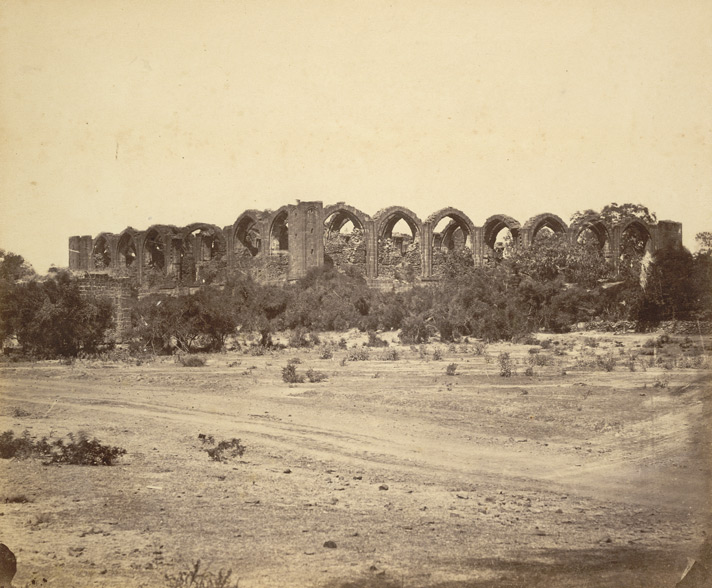Asar Mahal stands as a profound testament to the architectural and cultural brilliance of the Adil Shahi dynasty, nestled in the historic landscape of Bijapur, Karnataka. Constructed in 1646 by Mohammed Adil Shah, this remarkable monument transcends its original purpose as a Hall of Justice, evolving into a revered sanctuary of Islamic spiritual significance.
The building's architectural splendor reflects a sophisticated blend of Islamic and Persian design elements, characterized by elegant wooden columns and exquisite frescoes adorning its walls and ceiling. Its square layout, complemented by a serene front tank and surrounding garden, exemplifies the aesthetic sensibilities of the Adil Shahi period. The upper storey, adorned with vibrant landscape paintings and intricate artwork, offers a glimpse into the sophisticated craftsmanship of the era.
Central to Asar Mahal's spiritual importance is its collection of precious Islamic relics, most notably a revered hair believed to have belonged to the Prophet Muhammad. This sacred artifact transforms the monument from a mere architectural marvel into a place of deep religious veneration. The annual Urs festival, dedicated to Hazrat Syed Asadullah Hussaini, further elevates its cultural significance, drawing thousands of devotees who celebrate the spiritual legacy of the Sufi traditions.
The historical narrative of Asar Mahal is intrinsically linked to the broader story of the Adil Shahi dynasty, a remarkable ruling lineage that governed Bijapur from 1489 to 1686. Established by Yusuf Adil Shah, the dynasty was renowned for its remarkable cultural tolerance and patronage of arts, earning Bijapur the poetic titles of "Dilkusha" (city of delight) and "Vijayapura" (city of victory). This spirit of inclusivity was perhaps best embodied by rulers like Ibrahim Adil Shah II, who famously composed verses honoring Hindu goddesses and constructed temples within his palace precincts.
The architectural complex of which Asar Mahal is a part—the historic Citadel—represents a magnificent ensemble of Adil Shahi architectural achievements. Alongside other notable structures like the Jami Masjid and Gagan Mahal, it stands as a living testament to the dynasty's sophisticated urban planning and artistic vision. The site's significance extends beyond its physical beauty, serving as a powerful symbol of the cultural and architectural innovations of its time.
While the Adil Shahi reign concluded dramatically with the Mughal conquest in 1686 under Aurangzeb, the legacy of monuments like Asar Mahal continues to speak eloquently about a period of remarkable cultural synthesis. The building's preservation under the Archaeological Survey of India ensures that future generations can appreciate this remarkable intersection of architectural brilliance, spiritual depth, and historical complexity.
The mystique surrounding Asar Mahal is further enhanced by its traditional restrictions, such as women being prohibited from entering the upper storey, which adds an intriguing layer of cultural complexity to its narrative. This subtle boundary represents the nuanced social dynamics of its historical context, inviting visitors to contemplate the multilayered nature of cultural practices and architectural spaces.
Today, Asar Mahal stands not just as a historical monument but as a living narrative of Bijapur's rich cultural tapestry. It invites visitors to journey through centuries of artistic expression, spiritual devotion, and historical transformation, offering a profound connection to a remarkable period of Indian history that continues to inspire and fascinate.







